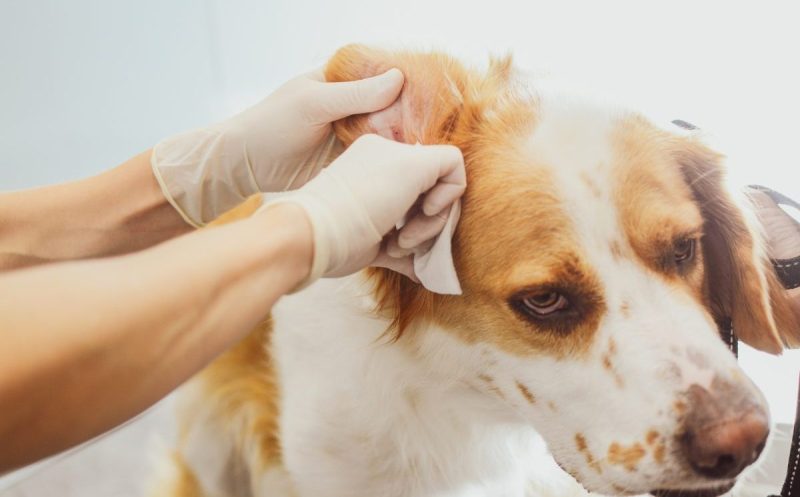Dog ear mites are small parasites, most commonly of a species called Otodectes cynotis, that feed on the wax, oils, and debris in dogs’ ears. They can cause inflammation and itchiness, which may result in self-inflicted injury and secondary infection as dogs scratch at themselves.
Ear mites sometimes spread outside the ear to the skin, especially the paws, head, neck, or tail where they can cause further infections. If you see the signs of ear mites in your dog, consult your veterinarian for a proper diagnosis and treatment. Here’s what you should know about the symptoms, causes, and treatments.
Symptoms Of dog ear mites
The symptoms of ear mites in dogs can vary depending on the severity of the infestation, and scratching or head shaking to relieve itchiness only tends to make symptoms and complications worse.
If you see the signs of ear mites in your dog, consult your vet for treatment as soon as possible to prevent further wounds and infections.
Here are a few symptoms of dog ear mites:
- Itchiness
- Scratching at the ears
- Rubbing ears on surfaces
- Head shaking
- Alopecia around the ears
- Hematomas (blood blisters on the ears, usually caused by head shaking)
- Reddish-brown discharge that looks like coffee grounds (made mostly of dried blood that can obstruct the ear)
- Crusting, scabbing, bleeding, or oozing ear flaps
- Odor from the ears
- Red, inflamed skin
- Scratches, wounds, and scabs (self-inflicted while scratching)
- Secondary infection from open wounds
- Scratching at other areas of the body where mites may have spread (paws, neck, tail, etc.)
Causes of dog ear mites
Ear mite infestations in dogs are usually caused by Otodectes cynotis, an eight-legged parasite that the naked eye can barely see.
Symptoms result from dogs’ immune system response to these parasites. They are highly contagious between dogs, but it’s uncommon for them to infect humans, as they can’t live on human skin for long.
While Otodectes cynotis is a fairly mild parasite infestation, it can lead to complications when dogs have immune hypersensitivity or allergies to mites. This parasite is also highly contagious in dogs and easily spread during social situations between canines.
Humans who do get infected show signs of a rash of small, red bumps. Ear mites can also infest cats, rabbits, and ferrets, and interaction with any of these affected animals can transmit ear mite infestation to dogs.
Ear mites tend to live for about three weeks, and they can’t survive for long in the environment without a host, so the primary means of transmission is casual interaction between pets. This can happen at dog parks, in homes with multiple pets, or in any social situation where animals interact.
Treatments for dog ear mites
Treatment for ear mites in dogs usually begins with a thorough cleaning of the ears. After that, topical anti-parasite medication is applied to the affected skin. Anti-inflammatory drugs may also be prescribed to help reduce inflammation and relieve discomfort.
Medication usually must be given over the course of seven to ten days, even though dogs usually show immediate signs of relief, as this will ensure that the mite eggs are fully eradicated. Affected animals should be quarantined from other pets, as the mites are highly contagious. Veterinarians may give antibiotics to dogs who show signs of secondary bacterial infection from self-inflicted wounds.
If the infestation spreads to other parts of the skin outside of the ears, dogs may need specially formulated shampoo or topical powder to get rid of the infestation. Any other injuries, including hematomas, will be treated accordingly. It’s important to make sure dogs do not continue to scratch at these wounds as they heal, and an Elizabethan collar may be necessary.

